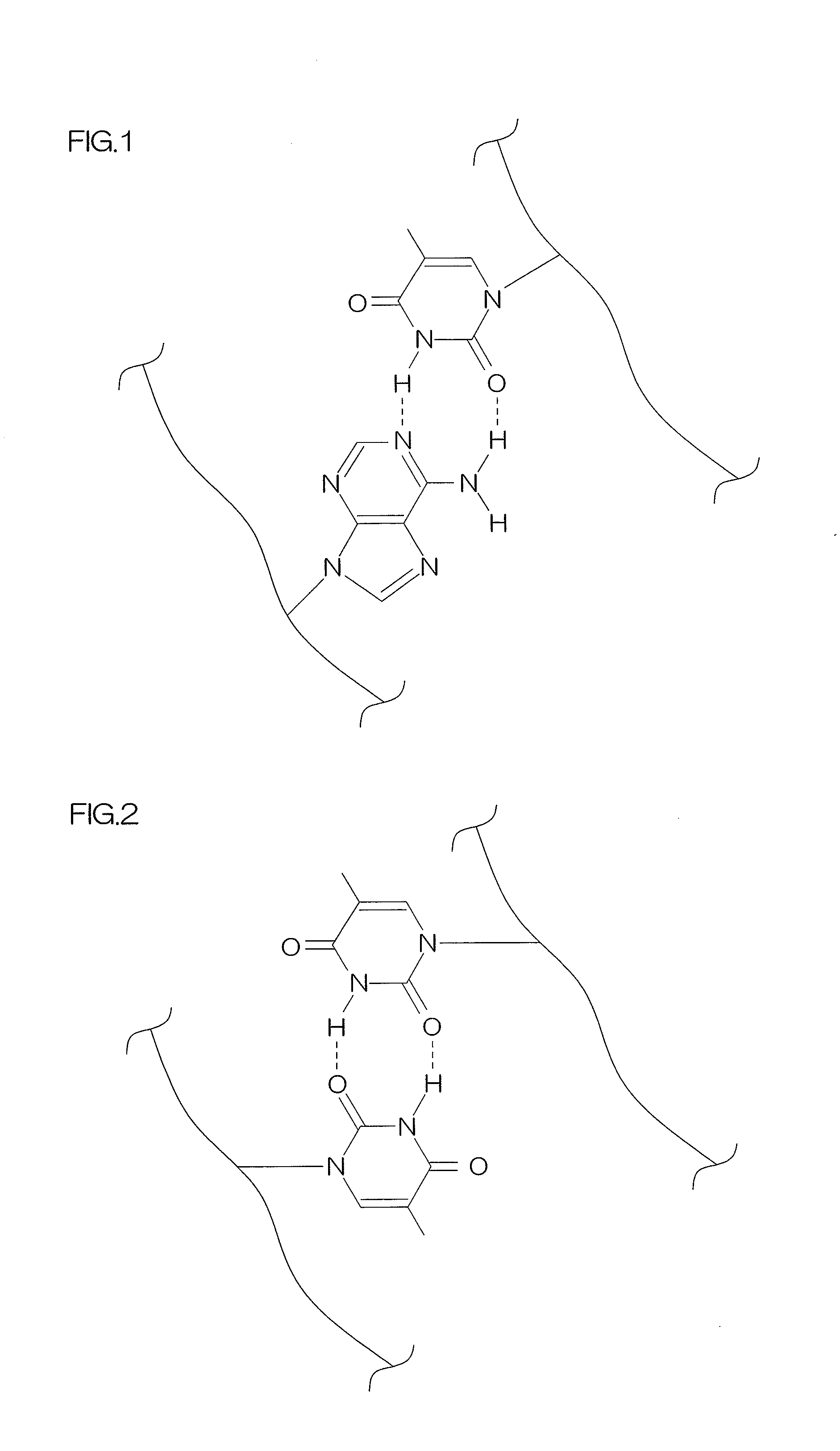Thermoplastic silicone resin
a technology of thermoplastic silicone and silicone resin, applied in the field of thermoplastic silicone resin, can solve the problems of not being suitable for industrial products requiring heat resistance and transparency, and achieve the effects of reducing discoloration, improving storage stability, and improving handling ability and storage stability
- Summary
- Abstract
- Description
- Claims
- Application Information
AI Technical Summary
Benefits of technology
Problems solved by technology
Method used
Image
Examples
example 1
[0085]0.050 g (0.30 mmol) of 1-allylthymine and 0.042 g (the molar ratio of vinyl group in 1-allylthymine to SiH group in organohydrogenpolysiloxane is 1 / 1) of an organohydrogenpolysiloxane (a compound in which all of the R1s to R6s are methyl groups and represented by “a”=10 and “b”=11 in the above-described general formula (2), the viscosity of 20 mPa·s) were dissolved in 1 mL of dichloroethane and 2 μL (the platinum content is 0.1 parts by mass with respect to 100 parts by mass of the organohydrogenpolysiloxane) of a platinum-1,3-divinyl-1,1,3,3-tetramethyldisiloxane complex (a platinum concentration of 2 mass %) as a hydrosilylation catalyst was added thereto to be stirred at 70° C. for 20 hours. Thereafter, under reduced pressure, the solvent was removed at room temperature (25° C.), so that a thermoplastic silicone resin was obtained.
example 2
[0086]A thermoplastic silicone resin was obtained in the same manner as in Example 1, except that 0.074 g (the molar ratio of vinyl group in 1-allylthymine to SiH group in organohydrogenpolysiloxane is 1 / 1) of an organohydrogenpolysiloxane (a compound in which all of the R1s to R6s are methyl groups and represented by “a”=20 and “b”=9 in the above-described general formula (2), the viscosity of 30 mPa·s) was used instead of the organohydrogenpolysiloxane in Example 1.
example 3
[0087]A thermoplastic silicone resin was obtained in the same manner as in Example 1, except that 0.074 g (0.30 mmol) of 1-(4-vinylbenzyl)thymine was used instead of the 1-allylthymine.
PUM
| Property | Measurement | Unit |
|---|---|---|
| viscosity | aaaaa | aaaaa |
| viscosity | aaaaa | aaaaa |
| reaction temperature | aaaaa | aaaaa |
Abstract
Description
Claims
Application Information
 Login to View More
Login to View More - R&D
- Intellectual Property
- Life Sciences
- Materials
- Tech Scout
- Unparalleled Data Quality
- Higher Quality Content
- 60% Fewer Hallucinations
Browse by: Latest US Patents, China's latest patents, Technical Efficacy Thesaurus, Application Domain, Technology Topic, Popular Technical Reports.
© 2025 PatSnap. All rights reserved.Legal|Privacy policy|Modern Slavery Act Transparency Statement|Sitemap|About US| Contact US: help@patsnap.com



